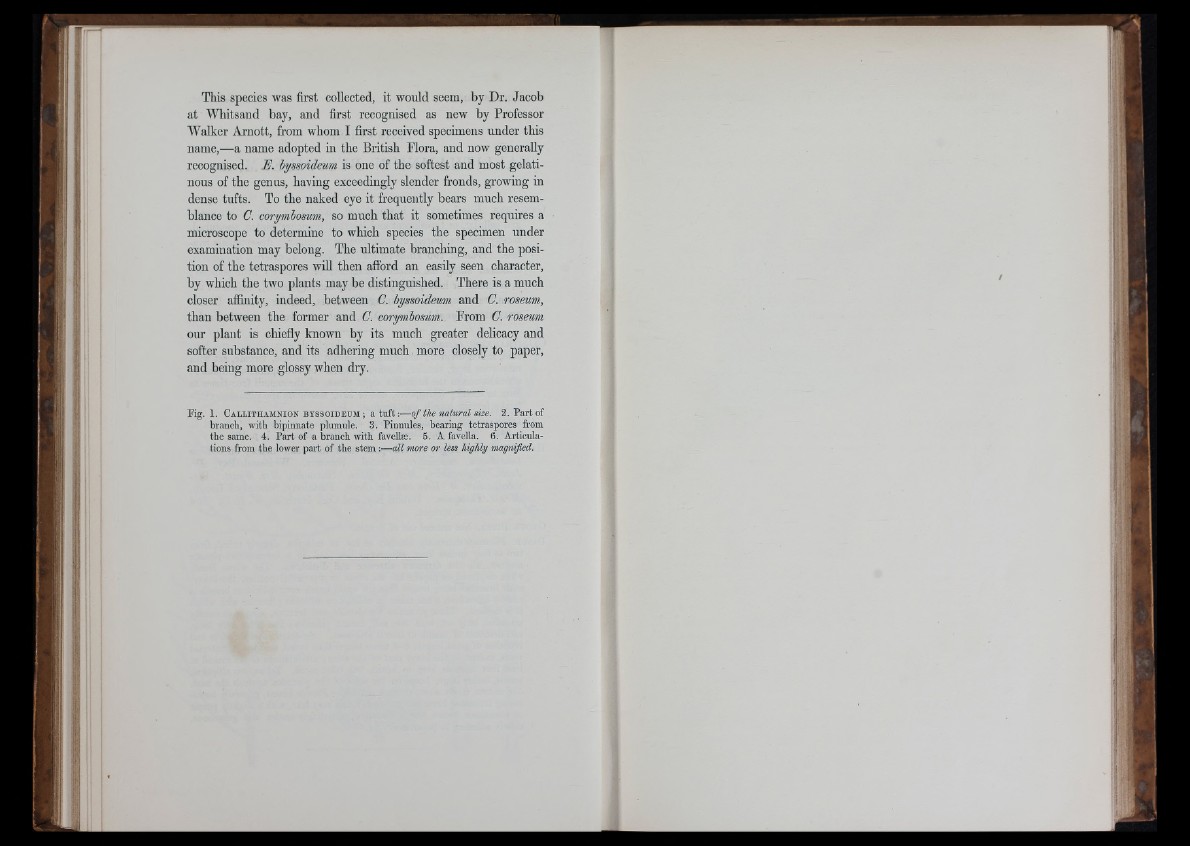
This species was first collected, it would seem, by Dr. Jacob
at Whitsand bay, and first recognised as new by Professor
Walker Arnott, from whom I first received specimens under this
name,—a name adopted in the British Flora, and now generally
recognised. E. byssoideum is one of the softest and most gelatinous
of the genus, having exceedingly slender fronds, growing in
dense tufts. To the naked eye it frequently bears much resemblance
to C. corymbosum, so much that it sometimes requires a
microscope to determine to which species the specimen under
examination may belong. The ultimate branching, and the position
of the tetraspores wül then aiford an easily seen character,
by which the two plants may be distinguished. There is a much
closer affinity, indeed, between C. byssoideum and C. roseum,
than between the former and C. corymbosum. From C. roseum
our plant is chiefly known by its much greater delicacy and
softer substance, and its adhering much more closely to paper,
and being more glossy when dry.
Kg. 1. O a l l i t h a m n i o n BYSSOIDEUM ; a tu f t;— of the natural size. 2. Part of
branch, with bipiunate plumule. 3. Pinnules, bearing tetraspores from
the same. 4. Part of a branch with faveUss. 5. A faYella. 6. Articulations
from the lower pai't of the stem ;— all more or less highly magnified.